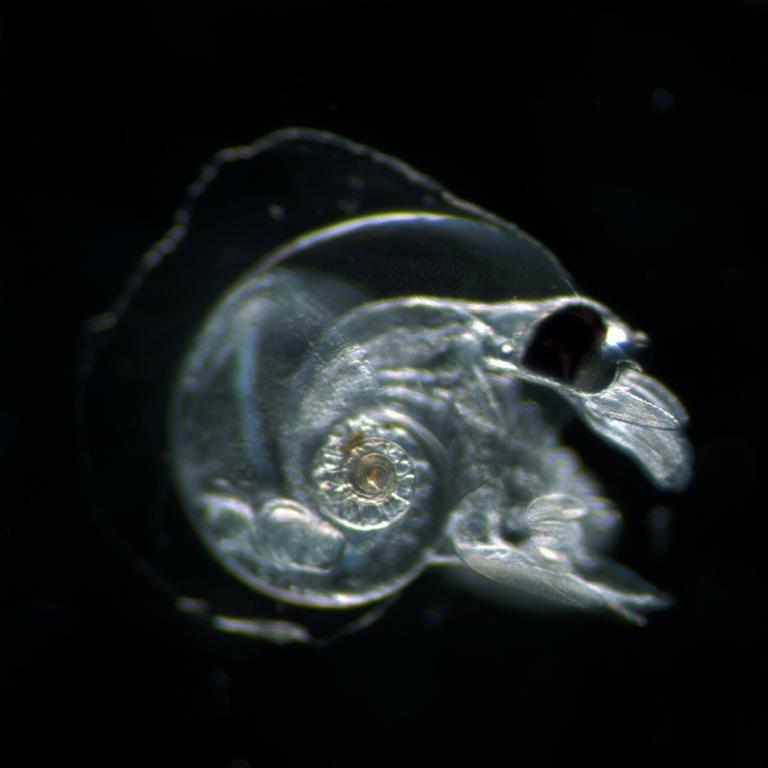
‘It’s the work of several lifetimes’
Naturalis has several tens of thousands of planktonic snails in its collection. Now, for the first time, they are all described together. Our researchers use these shells to learn more about evolution in the open ocean, and about how vulnerable species adapt to climate change.
Collection
Naturalis has over forty million objects in its total collection, including large sub-collections of both fossil and recent molluscs that spent their entire lives floating around in the open sea: holoplanktonic snails. In total, it’s about 25,000 so-called lots, where one lot contains a number of specimens belonging to the same species from one location and/or sampling date. The specimens are in little boxes or tubes, and since not every lot contains a single shell, the actual number of shells is a lot higher than 25,000.
Naturalis guest researcher Arie Janssen, retired curator of the collection, took the lead in an initiative where several Naturalis staff members described all the sub-collections. This means that for every species, the number of lots is described, including their geographic and stratigraphic origins.
Sea Butterflies
The inventory of planktonic snails is described in a scientific article, where the authors describe two groups: the Pteropods, or “sea butterflies” where the snail’s foot evolved into two similar wings. And the so-called heteropods or sea elephants (not to be confused with elephant seals), who have two different wings. In total, the article describes over five hundred taxa of planktonic snails. Of these, 216 can be found living in the oceans today.
Janssen has spent a large part of his research and his life studying fossil and recent material, and still does so. Until 1997 he was a collection manager for Naturalis, and he’s worked as a guest researcher ever since. The work on recent pelagic molluscs is continued by a research group led by marine biologist Katja Peijnenburg. She describes the recently-finished inventory as “a work of several lifetimes.” (Story continues below)
Siboga expedition
Some of the oldest parts of the collection go back to the nineteenth century, when the Dutchman Johan Jacob Tesch was researching material sampled during the Siboga-expedition to what is now called Indonesia. The collection is still expanding now: Peijnenburg and her colleagues gather new samples and specimens on a regular basis.
The Naturalis collection holds the so-called type specimens for many species: the “holotype” used for the formal scientific description of the species. Paratypes are other specimens of the same species used in the description, to give an impression of the possible variation within a species.
Making a registry of all these snails was a huge job, for sure. But why is it important to gather, label and describe all these thousands of small and fragile snails?
Marine canaries
First, as Peijnenburg explains: “The snails are part of the zooplankton, and as such an important part at the base of marine food chains.” Also, they are interesting because most planktonic snails make their shells out of aragonite, a form of calcium carbonate that dissolves relatively easily. That makes them vulnerable to acidification of the oceans, and a possible marine ‘canary in the coal mine’. “That makes it very important to properly catalogue the collection, and to make it accessible for researchers in the entire world”, Peijnenburg says.
As far as Janssen is concerned, “every pteropod is special”, but one specific species is especially dear to his heart. In Malta, he found the then-undescribed Gamopleura melitensis, which is common there but hasn’t been found anywhere else. There is also a species called Atlanta ariejansseni, named in his honour. It’s the species featured in the image on the top right.
Basteria
The Naturalis Researchers worked together with members of the Netherlands Malacological Society (NMV) in describing and gathering the collection, and making it digitally accessible. The article about the Naturalis pelagic mollusc collection appears in the NMV journal Basteria, which appears twice per year.